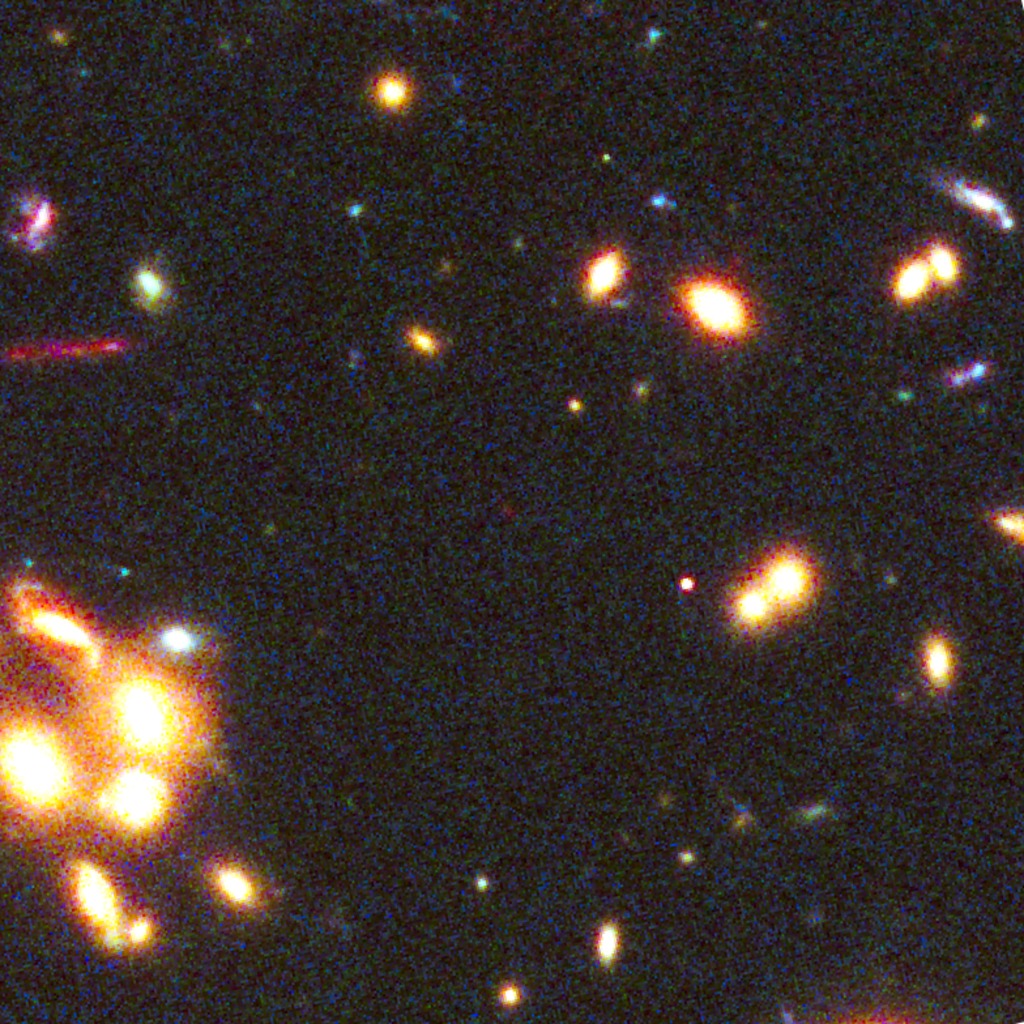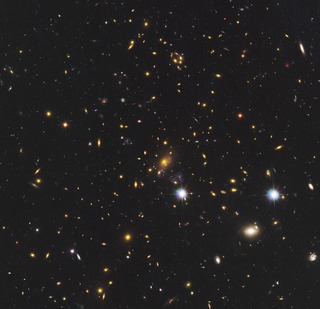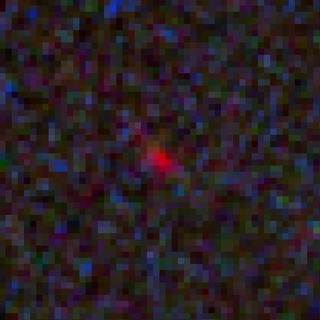
Credit: NASA/ESA/STScI/W. Zheng (JHU), and the CLASH team
Observation • September 19th, 2012 • ssc2012-12a2
ssc2012-12a2
With the combined power of NASA's Spitzer and Hubble space telescopes, as well as a cosmic magnification effect, astronomers have spotted what could be the most distant galaxy ever seen. Light from the primordial galaxy traveled approximately 13.2 billion light-years before reaching NASA's telescopes, shining forth from the so-called cosmic dark ages when the universe was just 3.6 percent of its present age.
Astronomers relied on gravitational lensing to catch sight of the early, distant galaxy. In this phenomenon, predicted by Albert Einstein a century ago, the gravity of foreground objects warps and magnifies the light from background objects.
At the center we see light from the newfound galaxy MACS 1149-JD. these visible and infrared light images from Hubble, MACS 1149-JD looks like a dim, red speck. The small galaxy's starlight has been stretched into longer wavelengths, or "redshifted," by the expansion of the universe. MACS 1149-JD's stars originally emitted the infrared light seen here at much shorter, higher-energy wavelengths, such as ultraviolet.
The far-off galaxy existed within an important era when the universe transformed from a starless expanse during the dark ages to a recognizable cosmos full of galaxies. The discovery of the faint, small galaxy opens a window onto the deepest, remotest epochs of cosmic history.
About the Object
- Name
- MACS J1149+2223 • MACS 1149-JD
- Type
- Galaxy
- Cosmology > Morphology > Deep Field
- Cosmology > Phenomenon > Lensing
- Distance
- 13,200,000,000 Light Years
- Redshift
- 9.6
Color Mapping
| Band | Wavelength | Telescope |
| Infrared | 1.1 µm | Hubble WFC3 |
| Infrared | 1.1 µm | Hubble WFC3 |
| Infrared | 1.3 µm | Hubble WFC3 |
| Infrared | 1.4 µm | Hubble WFC3 |
| Infrared | 1.6 µm | Hubble WFC3 |
| Optical | 435 nm | Hubble ACS |
| Optical | 475 nm | Hubble ACS |
| Optical | 555 nm | Hubble ACS |
| Optical | 606 nm | Hubble ACS |
| Optical | 625 nm | Hubble ACS |
| Optical | 775 nm | Hubble ACS |
| Optical | 814 nm | Hubble ACS |
| Optical | 850 nm | Hubble ACS |







